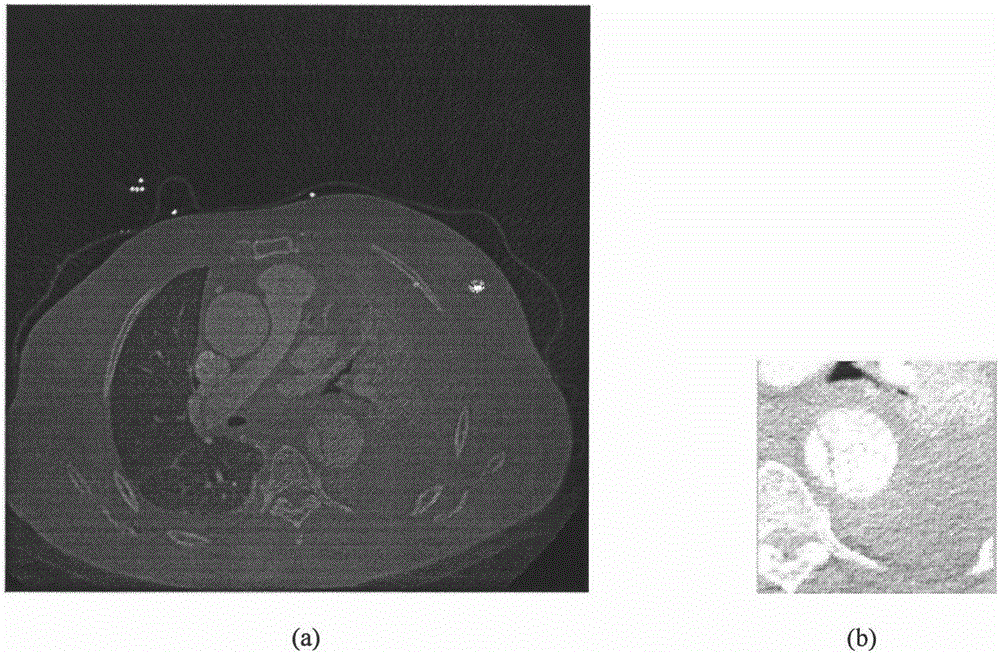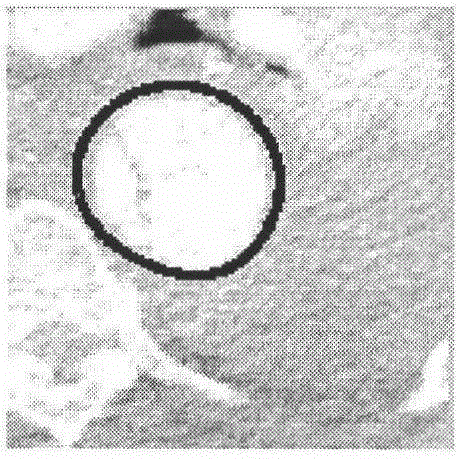Human body thoracic and abdominal cavity CT image aorta segmentation method based on GVF Snake model
A CT image, thoracic and abdominal technology, applied in the field of medical image processing, can solve the problems of human life-threatening, heavy workload, etc., and achieve the effect of avoiding uncertainty, improving segmentation accuracy, and good repeatability
- Summary
- Abstract
- Description
- Claims
- Application Information
AI Technical Summary
Problems solved by technology
Method used
Image
Examples
Embodiment Construction
[0024] Algorithm flow chart of the present invention is as figure 1 As shown, first read the CT image and perform image preprocessing; then set the initial contour of the GVF Snake model on the preprocessed image; then obtain the edge image of the preprocessed image; based on the obtained edge image Then use the diffusion equation to find the gradient vector flow GVF as the external energy field; then establish the internal energy model to maintain the smoothness of the contour; finally use the internal energy and external energy to construct the energy function E, and obtain the minimum of the energy E through iterative operations value, and finally make the contour reach the target boundary. The specific implementation process of the technical solution of the present invention will be described in detail below in conjunction with the accompanying drawings.
[0025] 1. Read CT images and perform image preprocessing
[0026] Due to the complexity of the internal structure of...
PUM
 Login to View More
Login to View More Abstract
Description
Claims
Application Information
 Login to View More
Login to View More - R&D
- Intellectual Property
- Life Sciences
- Materials
- Tech Scout
- Unparalleled Data Quality
- Higher Quality Content
- 60% Fewer Hallucinations
Browse by: Latest US Patents, China's latest patents, Technical Efficacy Thesaurus, Application Domain, Technology Topic, Popular Technical Reports.
© 2025 PatSnap. All rights reserved.Legal|Privacy policy|Modern Slavery Act Transparency Statement|Sitemap|About US| Contact US: help@patsnap.com



